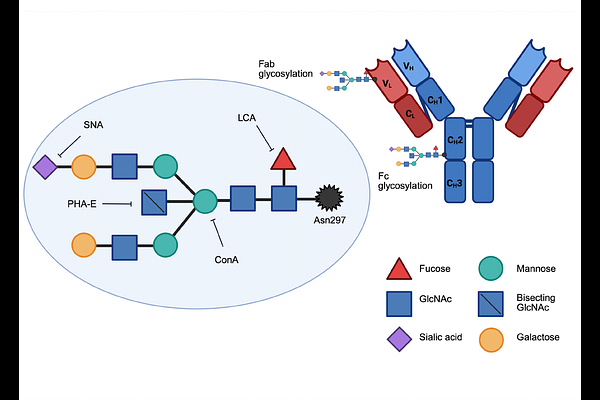Not all alloantibodies are created equal: IgG glycosylation and severity of antibody-mediated rejection in kidney transplantation

Not all alloantibodies are created equal: IgG glycosylation and severity of antibody-mediated rejection in kidney transplantation
Noble, J.; Glendenning, L. M.; Dard, C.; Bourdin, A.; Carlson, G. C.; Cobb, B. A.; Cravedi, P.
AbstractIntroduction: Antibody-mediated rejection (AMR) is a leading cause of kidney transplant (KT) failure, driven by donor-specific anti-HLA antibodies (DSA). However, not all patients with DSA experience accelerated graft loss, suggesting that factors beyond antibody presence influence AMR severity. Post-translational modifications, particularly glycosylation of Immunoglobulin-G (IgG), play a critical role in modulating antibody function. This study investigates the association between IgG glycosylation profiles and the risk and severity of AMR in KT recipients. Methods: We prospectively analyzed 65 KT patients, including 26 with acute AMR (aAMR), 27 with chronic-active AMR (caAMR), and 12 controls without rejection. IgG glycosylation was quantified using lectin-based ELISA, focusing on mannose, fucose, sialic acid, and bisecting N-acetylglucosamine (GlcNAc) levels. Results: Results showed that bisecting GlcNAc levels of total IgG were significantly higher in caAMR patients than controls (p=0.019) and aAMR patients (p=0.045). Multivariable analysis revealed that higher bisecting GlcNAc levels of IgG were independently associated with glomerulitis [g-score, OR: 2.7 (95%CI: 1.2-6.7), p=0.019] and chronic glomerulopathy [cg-score, OR: 2.8 (95%CI: 1.3-7.5), p=0.021], independent of DSA presence. Conclusions: These findings indicate an association between IgG glycosylation, particularly bisecting GlcNAc, and AMR severity. IgG glycosylation profiles could serve as biomarkers for AMR risk and severity, offering new insights into the mechanisms of AMR and potential therapeutic targets.